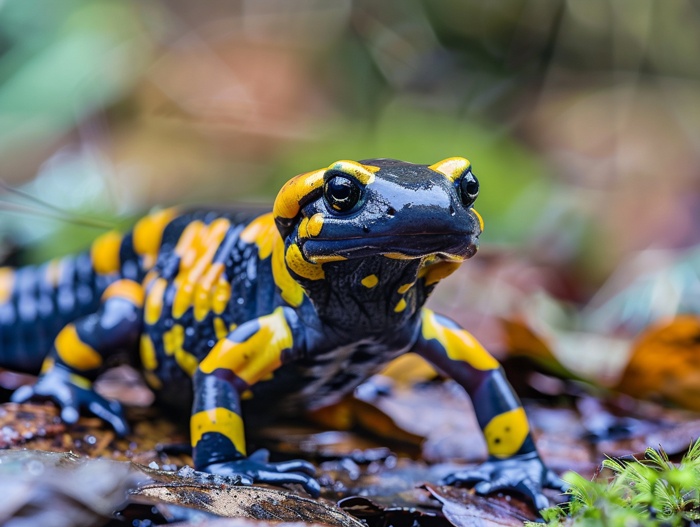Curious about whether salamanders are aquatic creatures? You’ve come to the right place. Salamanders are fascinating amphibians that have adapted to various habitats, including water.
While some salamander species prefer moist environments on land, others spend a significant amount of time in the water. These amphibians have unique characteristics that allow them to thrive in both aquatic and terrestrial ecosystems.
In this text, we’ll investigate into the world of salamanders and explore the intriguing ways in which these creatures interact with water. Stay tuned to uncover the secrets of salamanders’ aquatic lifestyles.
Key Takeaways
- Salamanders are fascinating amphibians that exhibit unique characteristics enabling them to thrive in both water and land environments.
- Some salamander species prefer aquatic habitats, living in bodies of water like ponds, lakes, and streams.
- Salamanders have adaptations such as gills, lungs, tail fins, and webbed feet that aid in their survival in aquatic ecosystems.
- Different types of salamanders, including aquatic and semi-aquatic species like newts and mudpuppies, have specific traits suited for their habitat.
- Salamanders play vital roles in aquatic ecosystems, contributing to predator control, nutrient cycling, serving as indicator species, and acting as habitat engineers.
Do Salamanders Live in Water

Characteristics of Salamanders
- Amphibians: Salamanders belong to the class Amphibia.
- Ectothermic: They rely on external heat sources to regulate their body temperature.
- Moist Skin: Salamanders have permeable skin that aids in gas exchange.
Habitat of Salamanders
- Diverse Environments: Found in various habitats from forests to deserts.
- Aquatic Habitats: Many species live in or near bodies of water like ponds, streams, and marshes.
- Land and Water: Some undergo aquatic phases in their lifecycle even if primarily terrestrial.
- Gills and Lungs: Some salamanders have both gills as larvae and lungs as adults.
- Tail Fin: Helps in swimming efficiently.
- Webbed Feet: Enable better movement in water.
Follow along to discover more about the intriguing area of salamanders and how they thrive in aquatic environments.
Types of Salamanders Found in Water

Aquatic Salamanders
- Description: These salamanders spend most of their life in water.
- Adaptations: They have fully developed gills for breathing underwater.
- Habitat: Often found in bodies of water like ponds, lakes, and streams.
- Examples: Newts are a common type of aquatic salamanders.
- Habitat: They live both in water and on land.
- Behavior: Often seen near water bodies and wet environments.
- Adaptations: Have a combination of lung breathing and skin respiration.
- Examples: Mudpuppies are a well-known semi-aquatic salamander species.
Importance of Salamanders in Aquatic Ecosystems

When discussing salamanders in aquatic ecosystems, it’s essential to highlight the crucial role they play. Salamanders are not just fascinating creatures to observe; they are integral to the health and balance of aquatic ecosystems. Here are some key points on the importance of salamanders in these environments:
- Predator Control: Salamanders help regulate populations of prey species such as insects, small fish, and amphibians, contributing to ecological balance.
- Nutrient Cycling: By consuming organic matter and releasing waste, salamanders aid in nutrient recycling, which is vital for aquatic plants and other organisms.
- Indicator Species: The presence and abundance of salamanders can reflect the overall health of aquatic habitats, serving as indicators of ecosystem quality.
- Habitat Engineers: Some salamander species are known to modify their surroundings, creating microhabitats that benefit a variety of aquatic organisms.
These points demonstrate that salamanders are not only fascinating creatures but also key players in supporting the delicate balance of aquatic ecosystems.
It’s crucial to recognize and appreciate the intricate interconnectedness of species within aquatic environments, with salamanders being an essential piece of the puzzle.
Conclusion
Salamanders are vital creatures in aquatic ecosystems, playing a crucial role in maintaining balance and harmony. Their presence ensures the regulation of predator populations, the cycling of nutrients, and acts as a barometer for habitat health. By serving as habitat engineers, salamanders contribute significantly to the intricate web of life in these environments. Understanding and appreciating the importance of salamanders in water ecosystems is key to preserving the delicate balance that supports diverse aquatic life forms.

Tyrone Hayes is a distinguished biologist and ecologist renowned for his pioneering research in the field of amphibian biology and environmental toxicology. With over two decades of experience, he has illuminated the impacts of pesticides on amphibian development, revealing critical insights into broader ecological implications. Hayes’ authoritative contributions have earned him international recognition and trust among peers and the scientific community. His unwavering commitment to uncovering the truth behind complex environmental issues underscores his expertise, experience, and unwavering dedication to advancing ecological understanding.
